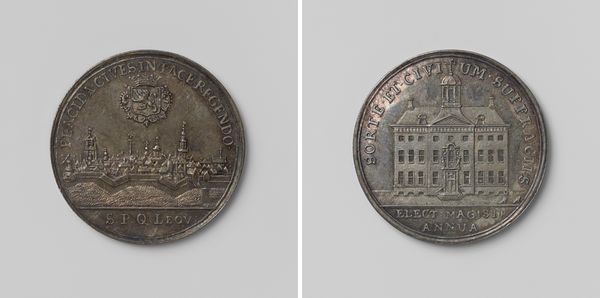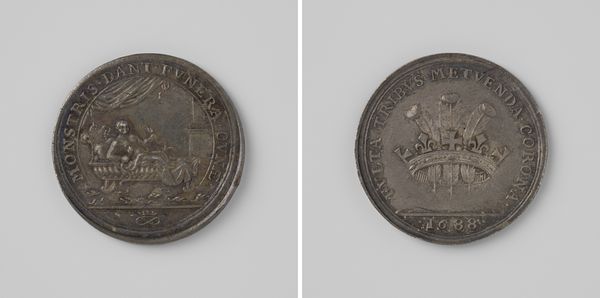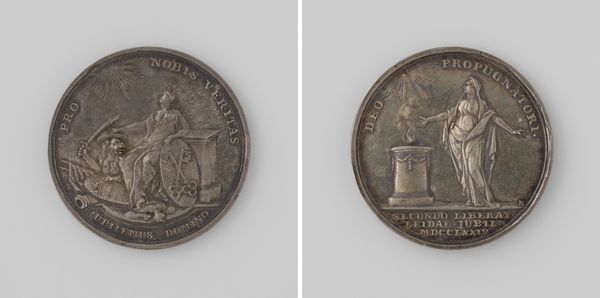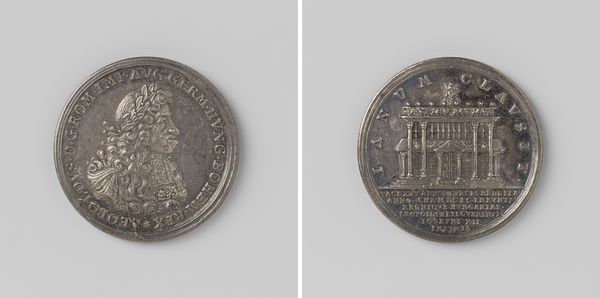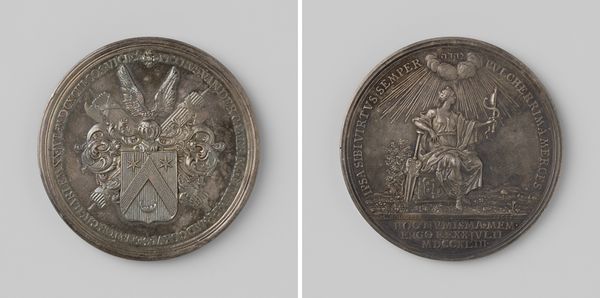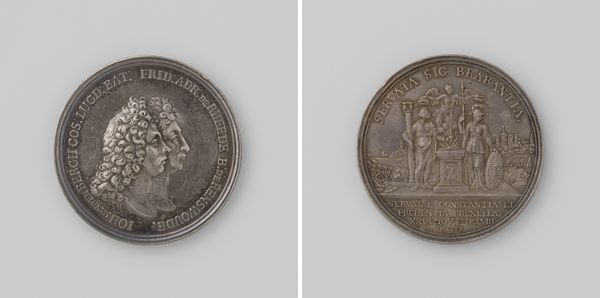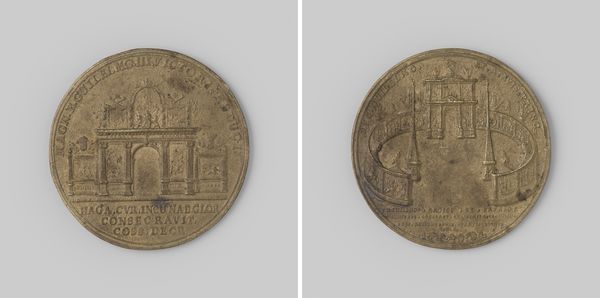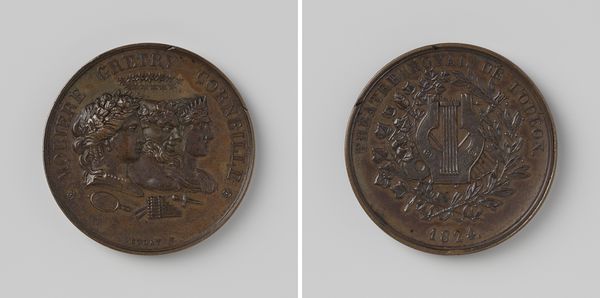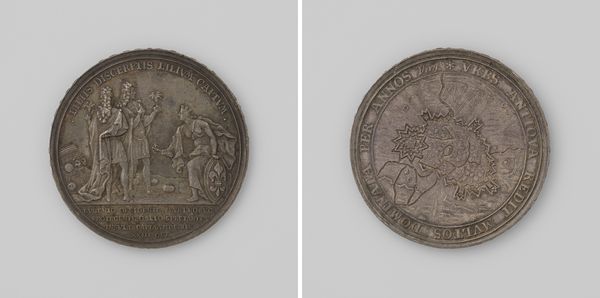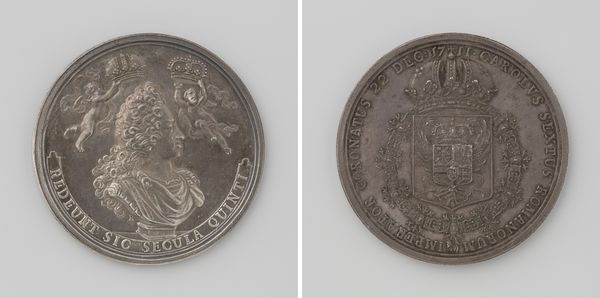
Geboorte van Lodewijk Filips Leopold Victor Ernest, kroonprins der Belgen 1833
0:00
0:00
metal, relief, sculpture, engraving
#
portrait
#
neoclacissism
#
metal
#
sculpture
#
greek-and-roman-art
#
relief
#
sculpture
#
history-painting
#
engraving
Dimensions: diameter 3.2 cm, weight 13.88 gr
Copyright: Rijks Museum: Open Domain
Editor: This is a metal relief from 1833 by Adolphe Jouvenel, titled "Geboorte van Lodewijk Filips Leopold Victor Ernest, kroonprins der Belgen"—quite a mouthful! I’m struck by the contrasting images: a seated figure on one side, and a baby in a crib on the other. How do you interpret the composition of this piece? Curator: Indeed. Jouvenel's medal presents us with a fascinating juxtaposition through its circular form and relief engraving. We must observe the relationship of form and symbolism. Notice how the figure on the obverse embodies classical virtue, while the reverse presents an intimate scene of infant royalty. How do these distinct visual vocabularies work in relation to one another within the structured composition? Editor: Well, the classical figure feels very formal and almost allegorical, whereas the crib scene is much more human and domestic. They seem disconnected. Is there a thematic link achieved through the artistic expression in the metal work? Curator: Precisely. The deliberate contrast invites inquiry. We can explore it via the composition itself: the weight and balance achieved, for instance, or how the surrounding text encloses both scenes, giving them a structured formality despite their very different subjects. Consider also, how does the materiality—the very bronze that constitutes this medal—function in harmonizing or further differentiating between these worlds? Editor: So, you're saying the metal itself, the conscious crafting of it, pulls these contrasting elements into a unified statement? Curator: Exactly. We can then appreciate how Jouvenel used the very means of representation—form, composition, materiality—to synthesize potentially disparate narratives into a powerful emblem of dynastic hope and virtuous governance. What do you think? Editor: I see it now. Thanks. By understanding these relations, it reveals deeper purpose. Curator: Indeed, visual analysis unlocks profound narratives, bridging seeming oppositions within the art object's intrinsic formal properties.
Comments
No comments
Be the first to comment and join the conversation on the ultimate creative platform.
